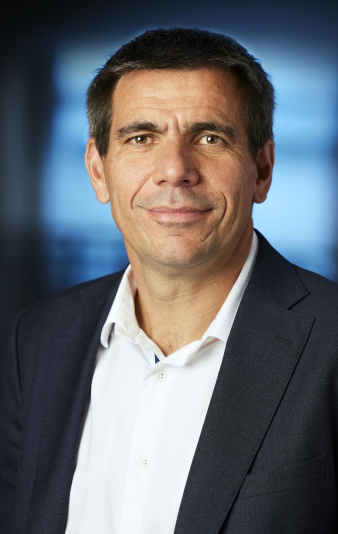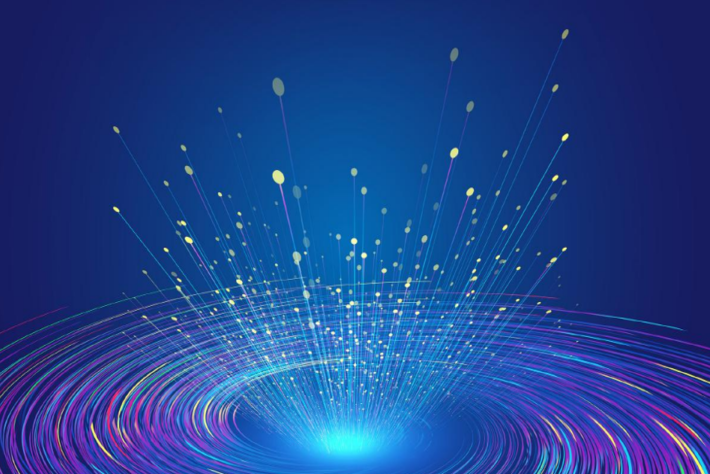As IoT matures, customers are looking for connectivity from providers that are easy to work with, can offer rapid onboarding, flexibility and excellent support. Digitalisation and automation are the keys to enabling this, but customer priorities also include security and sustainability. Wrapping these capabilities together with a comprehensive portfolio of IoT connectivity technology and then taking it to market is the challenge and opportunity facing service providers, Cyril Deschanel, the managing director Tele2 IoT, tells George Malim, the managing editor of IoT Now.
Having joined Tele2 IoT almost five years ago, Deschanel brings experience from more than seven years at Vodafone where he served as regional director of IoT for Southern Europe, Latin America and the Middle East. Before Vodafone, he spent over six years at Sierra Wireless taking his experience in the sector back to before the dawn of IoT.
As IoT enters its next phase, embracing new SIM technologies unlocks the traditional market dynamic of long contracts between connectivity providers and customers and provides true flexibility and choice to the market. For Deschanel, this provides an opportunity for markets to move away from the constraints of legacy providers and their cumbersome systems and enter a new era of simplified operations and easily accessible connectivity services and support.
George Malim: What are your priorities for developing Tele2 IoT’s business?
Cyril Deschanel: We started on this professional journey almost ten years ago – Tele2 IoT will be ten years old in October – so there have been enough years to look at how we have delivered on our promises. We have focused on a horizontal growth strategy that addresses all verticals by providing advanced connectivity services with us as an enabler on the communications side. While we address the worldwide needs of our customers, our focus is on companies in Europe, the UK and the US.
We are headquartered in Sweden, which accounts for about 20% of our business, with the remaining 80% split between 70% in Europe and 10% in the US. We have customers based across Europe and the US and IoT deployments in more than 180 countries. We have 22% year-on-year revenue growth which is approximately double the typical rate in this market of 9-10%. And we’re very proud that we have ten million connections in 180 countries with SIMs deployed everywhere.
Another important key performance indicator is that we have reached 84% employee satisfaction in our organisation which is above the market average. Our 75 people are dedicated to IoT-only, which is in marked contrast to other companies, especially telecoms carriers, that use people who are not IoT specialists to try and support customers. The combination of this dedicated expertise and employee satisfaction helps to feed customer satisfaction in a virtuous circle.
Probably the most important aspect of our business, though, is customer satisfaction – and we are achieving excellent results in this area. We have a net promoter score (NPS) of 49 which is well above the market where typical scores range from -10 to 20. We’ve been increasing customer satisfaction year after year and when employee engagement is this high, it also helps to satisfy customers.

GM: What’s next and what are your investment priorities?
CD: We’re investing in our geographic expansion, with the goal of getting closer to customers. We have been addressing markets remotely which is good for start-ups and SME customers but, for larger enterprises, you need to have a closer relationship so we’re investing in having presence in France, Italy, Spain, DACH, and reinforcing our presence in the UK. We have credibility in these markets already. I’ve been running southern European activities in previous carrier jobs, and we have people based in these countries, so they have local language skills, and they understand the culture and the customers, and they have a lot of market knowledge in these countries.
Southern and western European countries have mature markets but their legacy weighs on them. These countries are served by players with legacy systems, tools and processes that are far away from the digitised capabilities that we have built. We bring value by having a different approach that is much faster. We can on-board customers in two-to-five days, for example, and we have a digital contract with customers.
Customers that are used to working with slower, local incumbent providers and have done so for ten or 15 years don’t know what they can get in terms of speed and integrated experience. This is why we are investing in digitalisation alongside getting closer to customers through geographic expansion.
As we move from an inside-out to an outside-in structure, the critical challenge is how we automate systems, so the customer experience is the best in the world. The more we grow, the more we need to improve and the only way to achieve that is by digitalisation.
There are areas in which we can evolve and automate such as in no-touch delivery and our plan is to digitise completely over the next three years. When we are fully digitalised, this will help to fuel customer experience and customer satisfaction but also to support the high growth rate of new customer acquisition.
We have also invested in completing our offering, so we now have the full suite of IoT technology available. In addition to providing 2-5G cellular connectivity we now offer narrowband-IoT (NB-IoT), LTE-M and voice over LTE (VoLTE). NB-IoT and VoLTE are our most recent additions, and we have launched all of these technologies, so we have the full suite of cellular technologies in order to cater to all the needs of our customers.
The next area we’ve invested in is security. We’ve signed a partnership with Equinix which gives customers the most secure link to transport data. We’ve already pre-connected with major cloud providers such as Amazon, Google, and Microsoft to ensure more secure and reliable data transfer or our customers.
These four areas of investment are where we want to continue to build this fantastic organisation.
GM: How do you differentiate the customer experience Tele2 IoT provides from your competitors?
CD: Our team of dedicated IoT experts come from all over Europe and the world and is completely dedicated to IoT. Our IoT network operations centre (INOC) is dedicated to IoT exclusively and it is operated by people with a diverse range of experiences from different countries. We come from a Swedish organisation, so the culture is focused on high quality, high transparency, and being easy to work with. This feeds through into how we interact with customers. For example, we recently had a customer with an issue who called our technical service. We helped them, spending ten hours to solve a problem which was not our responsibility, and they were so pleased they sent our whole team cupcakes, saying they had never seen such good support from any telecoms operator in the last ten years.
This is how we want to stand out. Another example is that I was at a customer dinner recently and they offered to be an ambassador for us, attracting new customers to Tele2 IoT. If your own large customers are ready to recommend you and are willing to talk to other companies about you, that’s a phenomenal advantage.
These examples are possible because rather than ‘why’ we have built our customer service capabilities and we are continuing to build customer intimacy to support the business. Our aim is to overcome your challenges whatever industry you are in. We’re here to help you address your challenges and we understand that IoT is not always an easy journey for either small or large companies.
GM: As embedded and integrated SIMs (eSIM and iSIM) arrive on the market carriers’ customer ownership is threatened by the flexibility and choice these SIMs offer. What is Tele2 IoT’s view of these technologies?
CD: We’re innovative and proactive so in our portfolio we have plastic SIMs, rugged SIMs, the MFF2 eSIM form factor SIMs, and embedded universal integrated circuit card (eUICC) technology. We’re certainly not hiding away from new SIM form factors and models. In fact, we already have our 2SWITCH eUICC offering where you can provision your SIM over-the-air to other operators.
We were the first operator to launch and sell a virtual SIM profile through a customer project where we developed a groundbreaking integrated SIM, enabled and powered by our virtual profiles. Customers can embed it in their SIMs, modules or basebands, and we already have more than one million deployed virtual profiles. It’s a significant step for an operator to do that in terms of control and security and it means challenges are being addressed.
We see two main challenges with SIMs. The first is supply chain issues, which we are working to address by building up our stockpile of SIMs. During the worst part of the semiconductor crisis, we successfully worked out a way to minimise the need of semiconductors through a smart separation in the chip. This enabled us to keep up the growth even through these challenging times.
The second is that, with eUICC, our customers get the most flexibility possible. The eUICC SIM opens up the possibility to address and resolve restricted market issues, change operator, and other features. We are continuously working on improving our core connectivity to be number one in the world, and through a virtual profile from us – you will have access to exactly that.
Customers can have multiple profiles and swap operators as required thanks to eUICC. If you have both eUICC and a virtual profile, you completely unlock the market, and this is what is needed to help IoT reach its potential. Of course, there’s a lot of work involved in making this happen. We’ve recently had a team of our technical experts testing eUICC across borders between Germany, The Netherlands and Belgium. This was an important undertaking to understand how roaming will work and helps us lead the way in giving this technology to our customers. Certainly, eUICC is now part of many tenders, especially international ones. Customers don’t want to be locked-in to an operator for 10-12 years anymore.
GM: What about sustainable IoT operations? Has this become a priority for customers?
CD: Sustainability is at the heart of what we do, and customers now see and understand the sustainability goals of society. Ten years ago, customers were only paying lip service to sustainability, but it is now a real differentiator because people want to work with companies that take sustainability seriously.
Almost all IoT applications contribute to a more sustainable world so being extremely strong on sustainability is a strength. In fact, we’re the sixth most sustainable company in Europe with our number of employees and in 2020, Tele2 Group became the first carbon neutral telco in the Nordics and Baltics.
GM: How do you see Tele2 IoT’s role developing as IoT goes further into the hyperscale era?
CD: We started from zero nine-and-a-half years ago and we are now in the top ten in Europe, but we still want to go further. Through our efforts we want to be the flag carrier of democratising global connectivity. The IoT industry is ever-changing and trying to evolve as the world demands to be more connected. We truly believe that IoT Vendors that can see and act on the blockages hindering that evolution will be the winners. At Tele2 IoT we are striving to build the best tools for our customers that will enhance the management of multi continental deployments, decrease latency between their end points, and increased quality of services, as well as increase coverage in rural areas and making it easy for them to scale up the number their connected devices. These are the so-called barriers from our standpoint. By removing them through fit for purpose products coupled with best-in-class service, we believe Tele2 IoT will be a big contributor to overall development of the IoT market.
Comment on this article below or via Twitter: @IoTNow_










